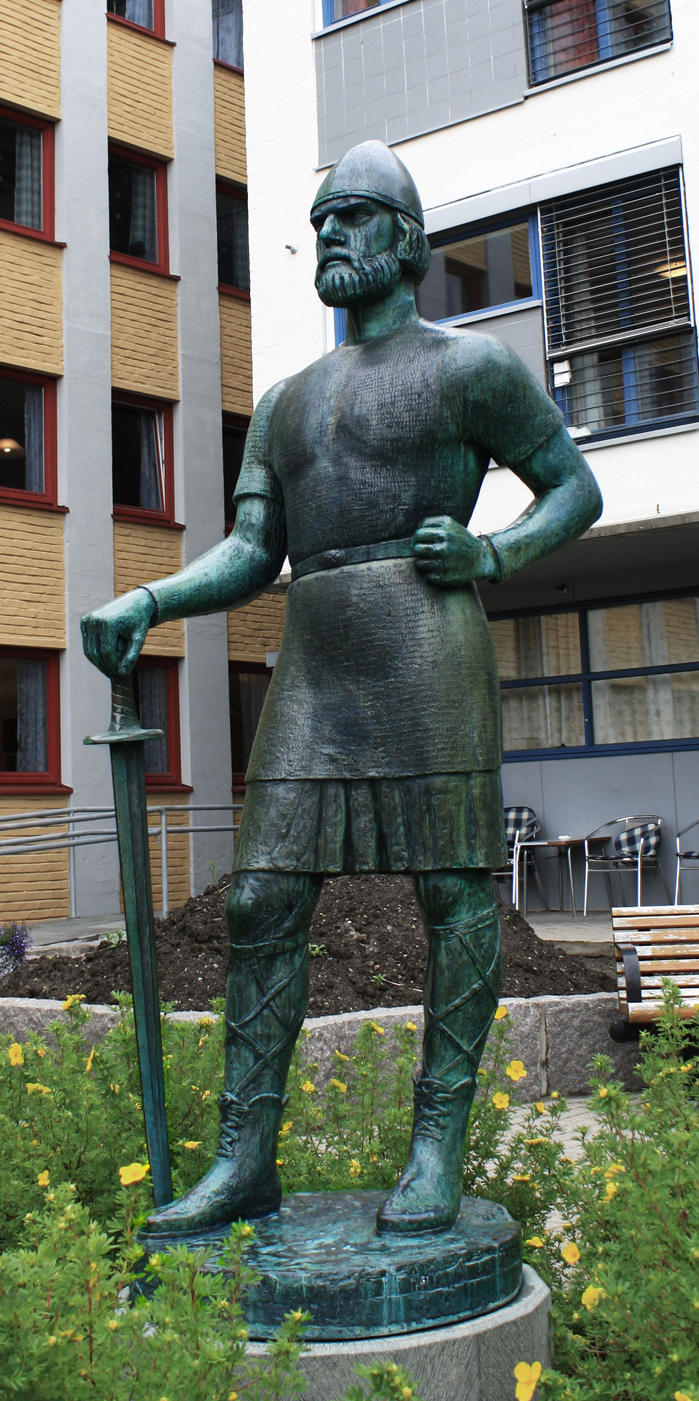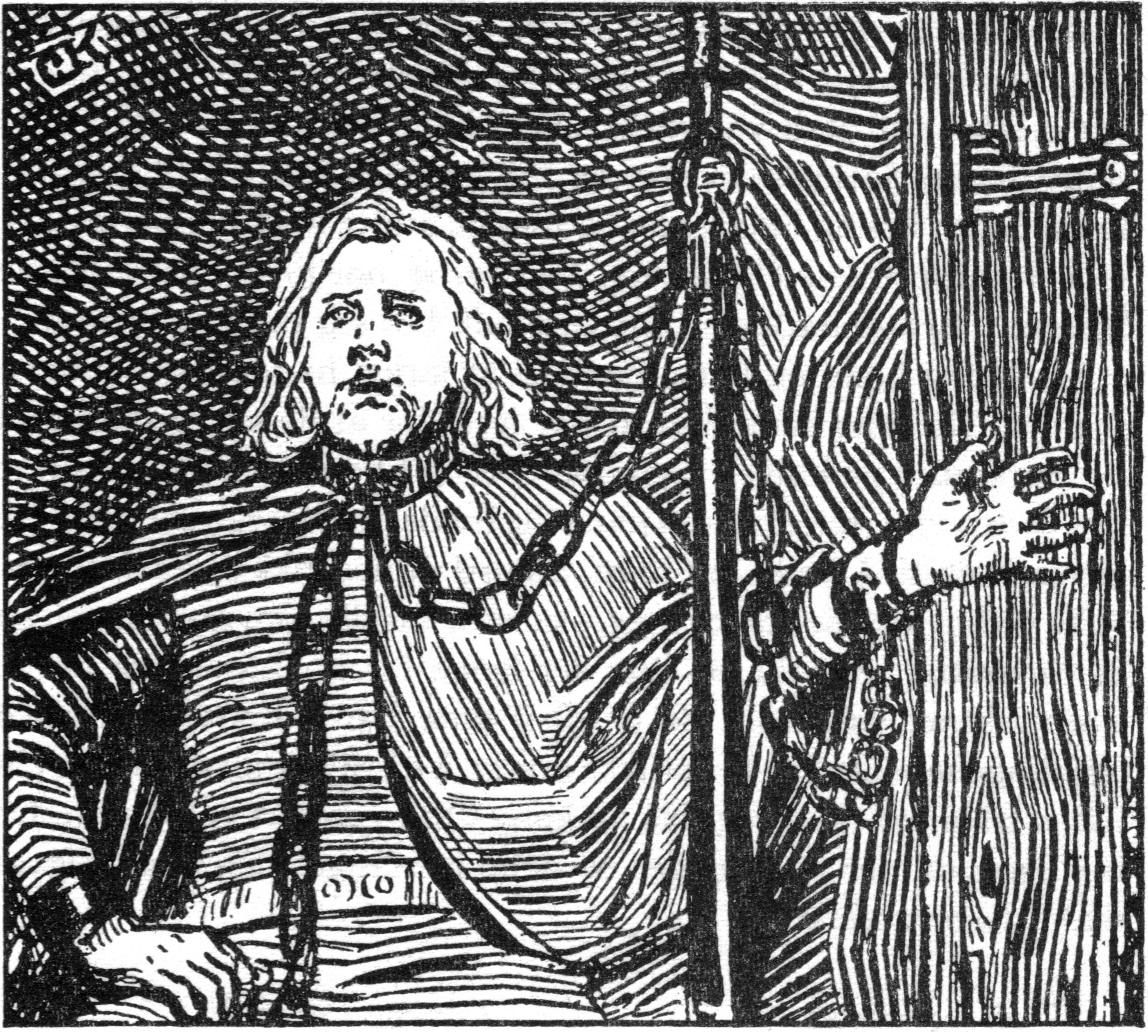|
Sweyn Haakonsson
Sweyn Haakonsson (Old Norse: ''Sveinn Hákonarson'', ) (died c. 1016) was an earl of the house of Hlaðir and co-ruler of Norway from 1000 to c. 1015. He was the son of earl Hákon Sigurðarson. He is first mentioned in connection with the battle of Hjörungavágr, where the ''Heimskringla'' says he commanded 60 ships. After the battle of Svolder in the year 1000, Sveinn became co-ruler of Norway with his half-brother, Eiríkr Hákonarson Erik Hakonsson, also known as Eric of Hlathir or Eric of Norway (; 960s – 1020s), was Earl of Lade, Governor of Norway and Earl of Northumbria. He was the son of Earl Hákon Sigurðarson and brother of the legendary Aud Haakonsdottir of Lade. .... After Eiríkr went to England in 1014, Sveinn was co-ruler with Hákon Eiríksson. In 1015, Óláfr Haraldsson arrived in Norway and claimed the throne. He defeated Sveinn and his allies in the battle of Nesjar. Sveinn retreated to Sweden, intending to muster a force to retake Norway but he ... [...More Info...] [...Related Items...] OR: [Wikipedia] [Google] [Baidu] |
Norway 1000 AD-en
Norway, officially the Kingdom of Norway, is a Nordic countries, Nordic country located on the Scandinavian Peninsula in Northern Europe. The remote Arctic island of Jan Mayen and the archipelago of Svalbard also form part of the Kingdom of Norway. Bouvet Island, located in the Subantarctic, is a Dependencies of Norway, dependency, and not a part of the Kingdom; Norway also Territorial claims in Antarctica, claims the Antarctic territories of Peter I Island and Queen Maud Land. Norway has a population of 5.6 million. Its capital and largest city is Oslo. The country has a total area of . The country shares a long eastern border with Sweden, and is bordered by Finland and Russia to the northeast. Norway has an extensive coastline facing the Skagerrak strait, the North Atlantic Ocean, and the Barents Sea. The unified kingdom of Norway was established in 872 as a merger of Petty kingdoms of Norway, petty kingdoms and has existed continuously for years. From 1537 to 1814, Norway ... [...More Info...] [...Related Items...] OR: [Wikipedia] [Google] [Baidu] |
Sveinn Úlfsson
Sweyn II ( – 28 April 1076), also known as Sweyn Estridsson (, ) and Sweyn Ulfsson, was King of Denmark from 1047 until his death in 1076. He was the son of Ulf Thorgilsson and Estrid Svendsdatter, and the grandson of Sweyn Forkbeard through his mother's line. He was married at least two times, and fathered 20 children or more out of wedlock, including the five future kings Harald Hen, Saint Canute, Oluf Hunger, Eric Evergood, and Niels. He was courageous in battle, but did not have much success as a military commander. His skeleton reveals that he was a tall, powerfully built man who walked with a limp. Biography Accession to the throne Sweyn was born in England, Bricka, Carl Frederik, ''Dansk Biografisk Lexikon'', vol. XVII vend Tveskjæg – Tøxen 1903pp.3–5 as the son of Ulf Thorgilsson and Estrid Svendsdatter, the latter of whom was the daughter of King Sweyn I Forkbeard and sister of Kings Harald II and Canute the Great. Sweyn grew up a military leader, and served ... [...More Info...] [...Related Items...] OR: [Wikipedia] [Google] [Baidu] |
Ladejarl Dynasty
The Earls of Lade () were a dynasty of Norse '' jarls'' from Lade (Old Norse: ''Hlaðir''), who ruled what is now Trøndelag and Hålogaland from the 9th century to the 11th century. The seat of the Earls of Lade was at Lade Gaard, now located in the eastern parts of the city of Trondheim. The site is near the seaside of the Trondheimsfjord, which was an important waterway in the Viking Age. According to Snorri, King Harald I of Norway was a great commander but lacked a fleet. For that he was assisted by Håkon Grjotgardsson. In gratitude Harald made him the first earl of Lade. Notable Earls of Lade * Hákon Grjótgarðsson (c. 860–870 – c. 900–920), an ally and father-in-law of Harald Fairhair * Sigurðr Hákonarson (died 962), friend and advisor of Hákon the Good * Hákon Sigurðarson (c. 937–995), ruler of Norway from about 975 to 995 * Eiríkr Hákonarson (960s – 1020s), governor of the majority of Norway under Svein Forkbeard * Sveinn Hákonarson ... [...More Info...] [...Related Items...] OR: [Wikipedia] [Google] [Baidu] |
Norwegian Military Leaders
Norwegian, Norwayan, or Norsk may refer to: *Something of, from, or related to Norway, a country in northwestern Europe *Norwegians, both a nation and an ethnic group native to Norway *Demographics of Norway *Norwegian language, including the two official written forms: **Bokmål, literally "book language", used by 85–90% of the population of Norway **Nynorsk, literally "New Norwegian", used by 10–15% of the population of Norway *Norwegian Sea Norwegian or may also refer to: Norwegian *Norwegian Air Shuttle, an airline, trading as Norwegian **Norwegian Long Haul, a defunct subsidiary of Norwegian Air Shuttle, flying long-haul flights *Norwegian Air Lines, a former airline, merged with Scandinavian Airlines in 1951 *Norwegian coupling, used for narrow-gauge railways *Norwegian Cruise Line, a cruise line *Norwegian Elkhound, a canine breed. * Norwegian Forest cat, a domestic feline breed *Norwegian Red, a breed of dairy cattle *Norwegian Township, Pennsylvania, USA Norsk * ... [...More Info...] [...Related Items...] OR: [Wikipedia] [Google] [Baidu] |
Regents Of Norway
In a monarchy, a regent () is a person appointed to govern a state because the actual monarch is a minor, absent, incapacitated or unable to discharge their powers and duties, or the throne is vacant and a new monarch has not yet been determined. The rule of a regent or regents is called a regency. A regent or regency council may be formed ''ad hoc'' or in accordance with a constitutional rule. ''Regent'' is sometimes a formal title granted to a monarch's most trusted advisor or personal assistant. If the regent is holding the position due to their being in the line of succession, the compound term ''prince regent'' is often used; if the regent of a minor is their mother, and she is wife or widow of the king, she would be referred to as ''queen regent''. If the formally appointed regent is unavailable or cannot serve on a temporary basis, a may be appointed to fill the gap. In a monarchy, a regent usually governs due to one of these reasons, but may also be elected to ru ... [...More Info...] [...Related Items...] OR: [Wikipedia] [Google] [Baidu] |
11th-century Norwegian Monarchs
The 11th century is the period from 1001 (represented by the Roman numerals MI) through 1100 (MC) in accordance with the Julian calendar, and the 1st century of the 2nd millennium. In the history of Europe, this period is considered the early part of the High Middle Ages. There was, after a brief ascendancy, a sudden decline of Byzantine power and a rise of Norman domination over much of Europe, along with the prominent role in Europe of notably influential popes. Christendom experienced a formal schism in this century which had been developing over previous centuries between the Latin West and Byzantine East, causing a split in its two largest denominations to this day: Roman Catholicism and Eastern Orthodoxy. In Song dynasty China and the classical Islamic world, this century marked the high point for both classical Chinese civilization, science and technology, and classical Islamic science, philosophy, technology and literature. Rival political factions at the Song dynast ... [...More Info...] [...Related Items...] OR: [Wikipedia] [Google] [Baidu] |
10th-century Norwegian Monarchs
1 (one, unit, unity) is a number, numeral, and glyph. It is the first and smallest positive integer of the infinite sequence of natural numbers. This fundamental property has led to its unique uses in other fields, ranging from science to sports, where it commonly denotes the first, leading, or top thing in a group. 1 is the unit of counting or measurement, a determiner for singular nouns, and a gender-neutral pronoun. Historically, the representation of 1 evolved from ancient Sumerian and Babylonian symbols to the modern Arabic numeral. In mathematics, 1 is the multiplicative identity, meaning that any number multiplied by 1 equals the same number. 1 is by convention not considered a prime number. In digital technology, 1 represents the "on" state in binary code, the foundation of computing. Philosophically, 1 symbolizes the ultimate reality or source of existence in various traditions. In mathematics The number 1 is the first natural number after 0. Each natural numbe ... [...More Info...] [...Related Items...] OR: [Wikipedia] [Google] [Baidu] |
Lee M
Lee Mulhern (born 12 June 1988), now known as Lee Matthews, is a singer-songwriter from Northern Ireland. Starting age 8, Lee Mulhern (his birth name) had performed as a child star prodigy covering pop and country songs on many Irish and UK radio and television shows. At age 17, he embarked on a series of music projects like Streetwize, Streetside and Access All Areas, in a bid to be launched as an "international boy band" made up of singers from various nationalities. After the boy band projects fell through, he relaunched a solo music career adopting the name Lee.M, and for a short time formed NXT-GEN, an electropop duo collaboration with Pete Doherty. In 2013, as Lee Matthews, he became part of the country music scene in Ireland in the Country and Irish genre releasing two albums, ''A Little Bitty Country'' in 2014 and ''It's a Great Day to Be Alive'' in 2015 and a string of singles releases. Beginnings as a child star Lee Mulhern was born in Omagh, Northern Ireland. He no ... [...More Info...] [...Related Items...] OR: [Wikipedia] [Google] [Baidu] |
Bersi Skáldtorfuson
Bersi Skáldtorfuson was an Icelandic skald, active around the year 1000 CE. He was a court poet to Earl Sveinn Hákonarson. During the Battle of Nesjar he was captured by King Óláfr Haraldsson's forces. Three of the four stanzas of his that have survived were ostensibly composed while in captivity. One ''lausavísa'' is attributed to Bersi in the surviving fragments of ''Óláfs saga helga'' by Styrmir Kárason. However, the same stanza is attributed to Sigvatr Þórðarson in Heimskringla and to Óttarr svarti in other sagas on St. Óláfr. Styrmir's saga gives some information on Bersi's career in St. Óláfr's service and indicates that he died in 1030. Bersi was at some point at the court of King Canute the Great where Sigvatr Þórðarson addressed him in verse after they had both received gifts from the king. Apart from being mentioned in the kings' sagas, Bersi also has a minor role in ''Grettis saga'', chapters 15, 23 and 24, where he asks Earl Sveinn to spare Gret ... [...More Info...] [...Related Items...] OR: [Wikipedia] [Google] [Baidu] |
Erlingr Skjálgsson
Erling Skjalgsson, på Sola (Sola, Rogaland, 975 – Boknafjorden, 21 December 1028, bur. Sola, Rogaland), "Rygekongen", Herse/Høvding i Rogaland, was a Norwegian political leader of the late 10th and early 11th centuries. He has been commonly seen as this period's foremost defender of the historic Norwegian social system. Erling fought for the traditional small, autonomous kingdoms and the þing system, against the reformists of the Fairhair family line. Background According to the Norwegian-Icelandic saga tradition Erling Skjalgsson, son of Torleiv Skjalg Ogmundsson, belonged to one of the most prominent clans in western Norway. He lived on the farm Sola in Nord-Jæren. His sister was married to Sigurd Toresson, an important chief in Trondenes and the brother of Tore Hund of Bjarkøy. Erling was established as a political front figure by the farmers of Gulaþing. They demanded that he be married to Olav Tryggvason's sister Astrid Tryggvesdatter, daughter of Tryggve Ola ... [...More Info...] [...Related Items...] OR: [Wikipedia] [Google] [Baidu] |





